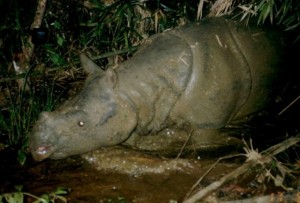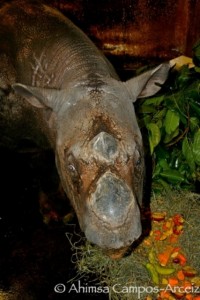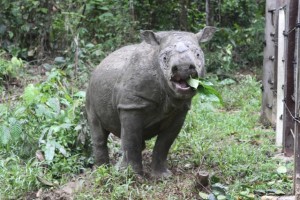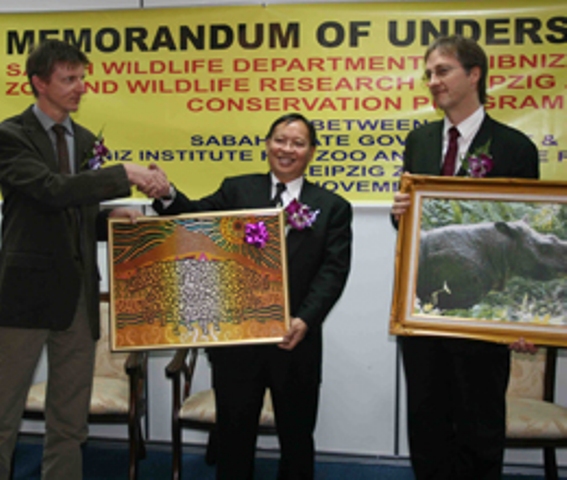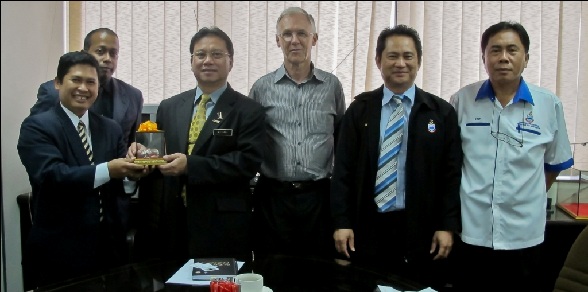 Sabah Wildlife Department comes under the Sabah State Ministry of Tourism, Culture and Environment. In 2011, the Ministry welcomed a new Permanent Secretary, Datuk Michael Emban, who is also Chairman of the Borneo Rhino Sanctuary (BRS) programme steering committee. BORA made a courtesy call on Datuk Michael on 23 May 2011 with Sabah Wildlife Department Assistant Director Dr Sen Nathan to outline progress of the BRS programme.
Sabah Wildlife Department comes under the Sabah State Ministry of Tourism, Culture and Environment. In 2011, the Ministry welcomed a new Permanent Secretary, Datuk Michael Emban, who is also Chairman of the Borneo Rhino Sanctuary (BRS) programme steering committee. BORA made a courtesy call on Datuk Michael on 23 May 2011 with Sabah Wildlife Department Assistant Director Dr Sen Nathan to outline progress of the BRS programme.
Picture shows Datuk Michael Emban (third from left) receiving a memento from Professor Dr Abdul Hamid Ahmad (left), Chairman of the BORA board of directors during the courtesy call. Also in the picture are Dr Sen Nathan (second from left), BORA Executive Director Datuk Dr Junaidi Payne (fourth from left), Deputy Permanent Secretary Mr William Baya, and Assistant Secretary (Environment) Mr Edip Abun.
